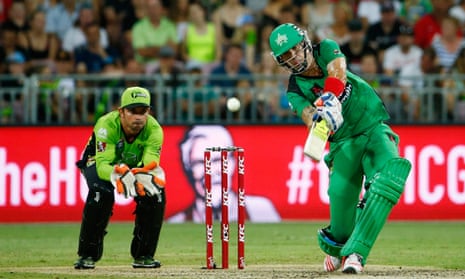Thirty years ago, when he was newly retired as a player and before he was canonised (if not yet knighted) for his performances as a jolly old card on Test Match Special, Geoffrey Boycott appeared on the Radio 4 programme In the Psychiatrist’s Chair.
The interviewer, Dr Anthony Clare, casually mentioned that cricket was a team game. Boycott denied it. “No, it’s 11 individuals as a team.” What a giveaway, thought the massed ranks of cricket-loving, Radio 4-listening, amateur psychiatrists. Boycott had finally admitted what his contemporaries always claimed: that he played for himself.
A generation later came Kevin Pietersen, Boycott’s polar opposite in his style of play but his long-lost son in terms of team-mate relations. Consider the differences, though: Boycott, between 1962 and 1986, played 414 first-class matches for Yorkshire (maybe he only ever played for Boycottshire but that isn’t the point), 108 Tests for England and only bits and pieces for anyone else.
Pietersen, in a less enduring career, has played for three English counties, a South African province and six specialist Twenty20 teams in four different countries, none of them yet his native South Africa or his adopted England. With power to add.
Pietersen played 104 Tests and without them he would have been a nobody. But he is the harbinger of a new world, in which Test cricket is becoming irrelevant, even on a player’s CV, a world in which it is becoming possible to make millions from playing without getting more than a cursory mention in Wisden. Without even having a team at all except as a very temporary hook-up in the Twenty20 leagues: something more than a one-night stand and less than a holiday romance. Perhaps KP can remember all the Twenty20 teams he has played for. It seems unlikely that he can remember whether or not his presence helped the Quetta Gladiators or the St Lucia Zouks actually win a trophy, unless there was a contractual clause that made it matter to him.
This is not the game that enraptured me when I was six years old. Nor the game I have written about happily for much of my adult life. I don’t care about the St Lucia Zouks. And I won’t care about whatever names the 12-year‑olds in marketing invent for the new made-up teams when the existing English Twenty20 is engulfed by yet another new competition in the years ahead. This wretched idea was sold to the county chairmen by bribery – an annual £1.3m sweetener per county – with a tacit undercurrent of threat.
My only interest – in common with many other cricket lovers – is the hope that the damnable thing is a total flop and that we can somehow save the game I once adored, and still love more than the people who have seized control of it. One can say that athletics is in crisis but at least we can be sure that, as long as humanity survives, kids will still try to run faster than their classmates. Cricket’s crisis is an existential one.
Everything worthwhile about it is being destroyed: its culture that the umpire’s decision is final; the delicate balance between bat and ball as the game degenerates into a six-hitting contest; and that even more delicate balance between individual and team that made it imperative for even the most militant individualists not to laugh out loud if one’s own magnificent century failed to save the team from defeat.
It is rotting in different ways in different places. In Asia, it is being wrecked from the top down: by corrupt administrators, politicians, businessmen and bookmakers while the kids still play in every available back alley and rice paddy. In Britain, it is happening mainly from the bottom up, as village cricket disintegrates and the once ubiquitous informal cricket of playground, park and back garden is crushed by the power of football, even in high summer. When did you last see a group of children (public schools and Asian community partially excepted) playing cricket without an adult? The cricket that does take place is increasingly argumentative and bad‑tempered; ask any club umpire.
This does not make the England and Wales Cricket Board guiltless. It is responsible for the catastrophic decision (cricket’s live now, suffer later version of PFI) to take the game away from the public and hand it to Sky – which took effect at the very moment of triumph in 2005 when the nation had just reignited its love affair with Test match cricket.
And this was merely the most devastating error. There have been decades of twisting, turning, fiddling and farting around with the fixture lists. When does a Test match now start? Search me. What about county matches? Heaven alone knows, if even heaven now bothers. But you can generally rule out June, July or August, the months of high summer.
The ECB still employs a few people with some knowledge of cricket, but even they seem to have zero understanding of the game’s rhythms. Which are the Test matches that still habitually draw crowds? Lord’s, The Oval, Sydney, Adelaide and Melbourne. What do they have in common? Predictability – so that friends can get together every year and watch the games companionably. Sometimes with panamas and bottles of Chardonnay; sometimes dressed as Elvis holding pints of lager. But the authorities are trying to wreck even this, by staging Oval Tests in July and Lord’s Tests in May and September. And in 2018 there will be no Tests at all between 5 June and 1 August. They just don’t get it.
One has long ago given up any hope of anything worthwhile emerging from the Dubaivory tower where sits the International Cricket Council. It has, so far as I can discover, three aims in life: the accumulation of money; its own self-aggrandisement; and the largely bogus expansion of the game designed to impress bodies such as the International Olympic Committee (the ICC claims 104 member countries, most of them places where cricket is played almost wholly by expats); it has not (yet) taken the Laws of Cricket away from MCC, but it often imposes new regulations, of varying degrees of stupidity. And no figure of genuine cricketing stature has held the most powerful job (variously called president or chairman) at the ICC since Sir Clyde Walcott bowed out 20 years ago.
The latest wheeze is to reinvigorate Test cricket by providing a final, now scheduled for Lord’s circa 2021. Where we do start with this crackpot plan? First, the essence of Test cricket is that it constitutes a complex form of arm-wrestling, in which superiority reveals itself over a long period of time. A single match, played in particular circumstances, proves nothing, as any fule kno.
Second, if the final is between, say, New Zealand and South Africa, who the hell will pay to watch? Third, does anyone at the ICC even know that there are three common results to a Test match, including the draw, which is part of cricket’s under-appreciated genius. Even if one team is completely superior, it still has to complete victory within the allotted time frame. And even a team staring at defeat still has the possibility of escape.
So what happens if the final is a draw? Will the team with the better overall record be declared champion, in which case they have no incentive to take any risks? Or do they share what will undoubtedly be big prize money, that being the only language the ICC understands? In which case, they might well agree to share that in advance.
I am credited with originating the current Test championship, which is sort of true. As editor of Wisden, I came up with the idea in 1995 and for a while it attracted considerable attention, especially in 1999 when England managed to hit rock bottom, below even Zimbabwe.
Then I made what may well be (despite many other contenders) the biggest damn-fool mistake of my life and handed the table over to the ICC for what I imagined was the benefit of cricket. As soon as they got their mitts on it they abandoned the straightforward system I had devised and handed it over to a statistician, using a method no one except him has ever understood.
As this stands, India are apparently the best Test team in the world although they have not won an away series against England since 2007 and not at all in Australia. And they haven’t played Pakistan in a Test for a decade. Yet, we are told, they are the reigning champions.
There are potential ways forward, one of which, emanating from Andrew Strauss and supported by Mike Atherton, involves using the three different forms of the game to produce one champion. This is worth discussion. I tried proposing something similar to revive county cricket years ago but it got lost in a Lord’s committee room. Cricket is not beyond salvation. One thing is certain: the current omnishambles will never be resolved by the dunderheads in Dubai.

